Two days ago we were just about to go home after several photographically unproductive hours on Antelope Island because of a lack of cooperative subjects combined with a “cloud from hell” that hung over the island and ruined our light all morning when I spotted two Long-billed Curlews far below us. The area was accessible to our vehicle so we decided to investigate. Both Mia and I are very glad we did!
Canon 7D, 1/3200, f/7.1, ISO 500, 500 f/4, 1.4 tc
One of the two birds was this adult, perched attentively on this almost white Tintic Quartzite boulder. The curlew was very tolerant of us and let us get close and even allowed me to maneuver my pickup for a variety of backgrounds.
Canon 7D, 1/2500, f/7.1, ISO 400, 500 f/4, 1.4 tc
This adult was very relaxed in our presence and eventually settled into grooming and preening as it’s doing here.
Canon 7D, 1/2500, f/7.1, ISO 400, 500 f/4, 1.4 tc
It turns out that the second bird I had spotted from up above was this juvenile in the tall grasses and the adult had obviously chosen a relatively high perch in order to keep an eye on the youngster (a behavior we’ve seen multiple times in adults with chicks or young juveniles).
Canon 7D, 1/1600, f/7.1, ISO 400, 500 f/4, 1.4 tc
We spent quite some time with these two birds – the parent on the boulder and the juvenile foraging in the grasses. Occasionally the adult would fly off for a few moments and then return to the rock as it’s doing in the image above so I decided to try to get some photos as it landed on the boulder. This is a difficult task because even though the bird is relatively easy to track (maintain focus) when it’s against a blue sky background all that changes dramatically when it drops low and gets close to the rock because now the background is dried grasses that are very close to the bird so autofocus often locks onto the background instead of the bird. Very frustrating!
Canon 7D, 1/1600, f/6.3, ISO 400, +2/3 ev, 500 f/4, 1.4 tc
So I tried pre-focusing at a distance right behind the rock where the bird should be a split second before landing. That part worked pretty well – the problem was that I forgot to allow for the exposure difference between the bird with a bright blue sky background and the darker background I would get as the curlew dropped below the horizon. The result was an overexposed subject so I had to reduce exposure in processing which always has an effect on image quality.
Canon 7D, 1/2500, f/7.1, ISO 400, -1/3 ev, 500 f/4, 1.4 tc
So the next time she came in to land on the boulder I was prepared and had my exposure set correctly. This time I made a split second decision and decided to pre-focus on the top of the rock instead of just behind it which meant that I might get a sharp image just as the bird lands on the rock rather than when it’s approaching it. And it worked pretty well I thought. No exposure adjustment so colors are rich and true (I don’t use saturation). One small problem though (isn’t there always one of those?) – these birds are quite large with a long neck and very long bill which requires a lot of depth of field. In this image the head seems just a tad soft to me. I probably should have been at f/8 and ISO 500. Live and learn, hopefully…
I’m sure you’ve noticed that when the curlew landed it scared up a mess of flies that had been on the rock. Antelope Island is crawling with brine flies, midges, mosquitoes and biting gnats (no see-ums) this time of year. They’re such an integral part of the island that I prefer this shot with the “bugs” fully visible rather than cloned out (something I’m very reluctant to do anyway).
Canon 40D, 1/500, f/13, ISO 400 @ 20mm
I thought you might like to see what it was like shooting these curlews. The bugs were thick and Mia and I were slathering on bug spray and still being eaten alive, especially by those damnable gnats. If you look carefully you can see the adult on top of the large white boulder and if you really squint you can see the juvenile in the grasses just to the right of the boulder and barely above the largest pale-green patch of greenery just below the line of sagebrush. That’s my 500mm lens to the left, sticking out my pickup window.
Canon 7D, 1/3200, f/6.3, ISO 500, 500 f/4, 1.4 tc
This morning Mia and I paid another visit to the island and made a special effort to find the curlews again. This time there was one adult and three juveniles in almost exactly the same spot. I’m assuming it’s the same adult with two more juveniles we hadn’t seen the other day. And as we sat there one of the youngsters sauntered over and checked us out so closely that at times I could no longer focus on it. It alway gives me a special feeling when a bird approaches me with such apparent trust.
Ron


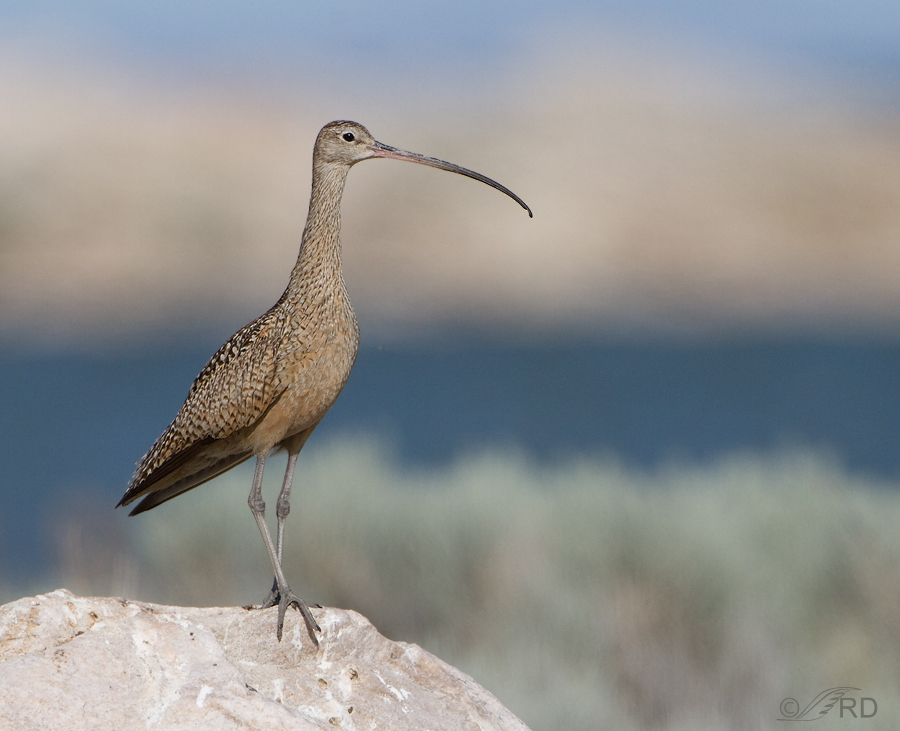
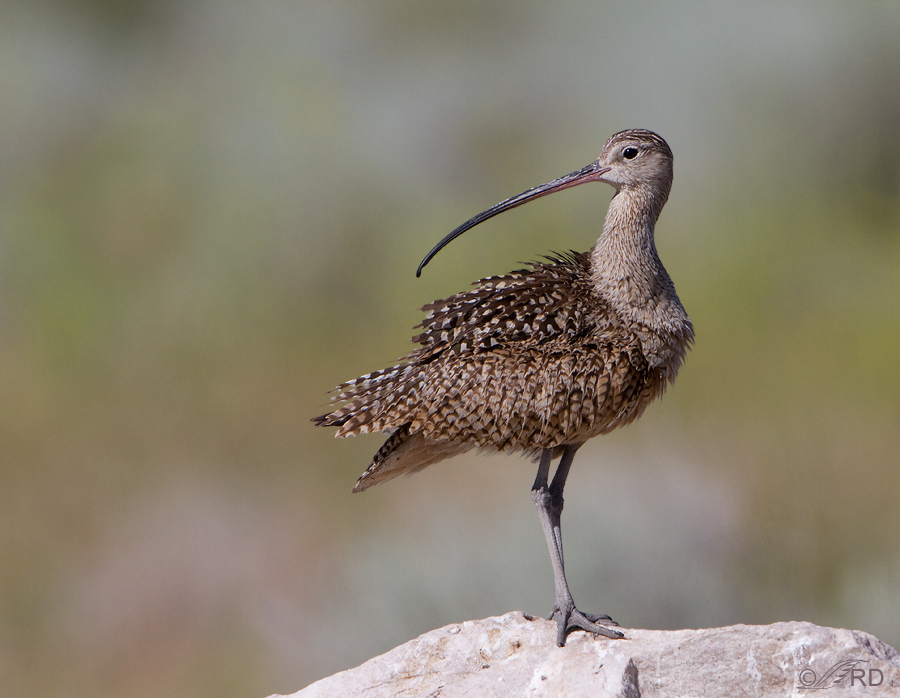
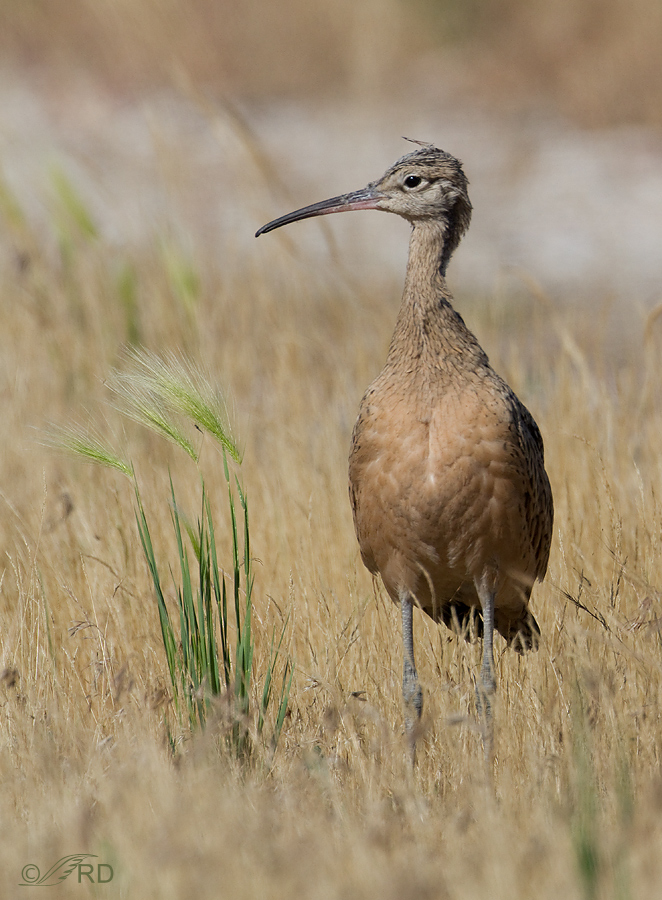
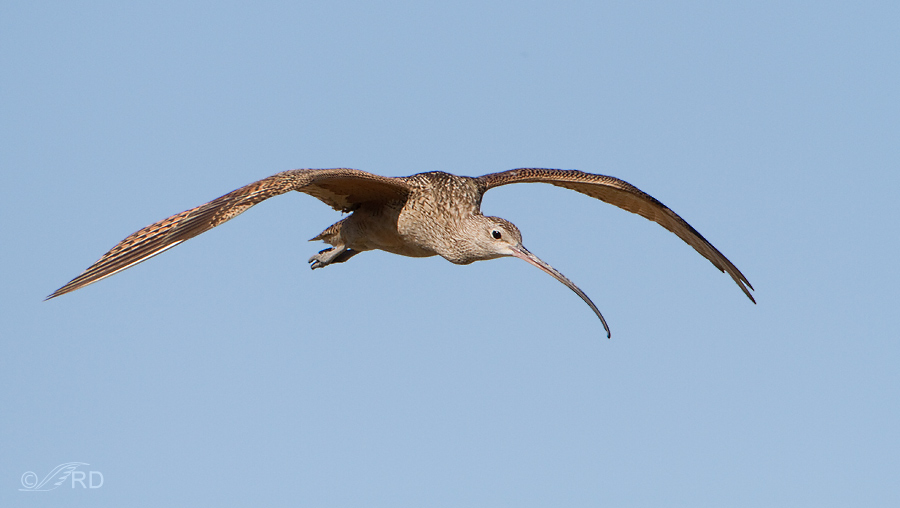
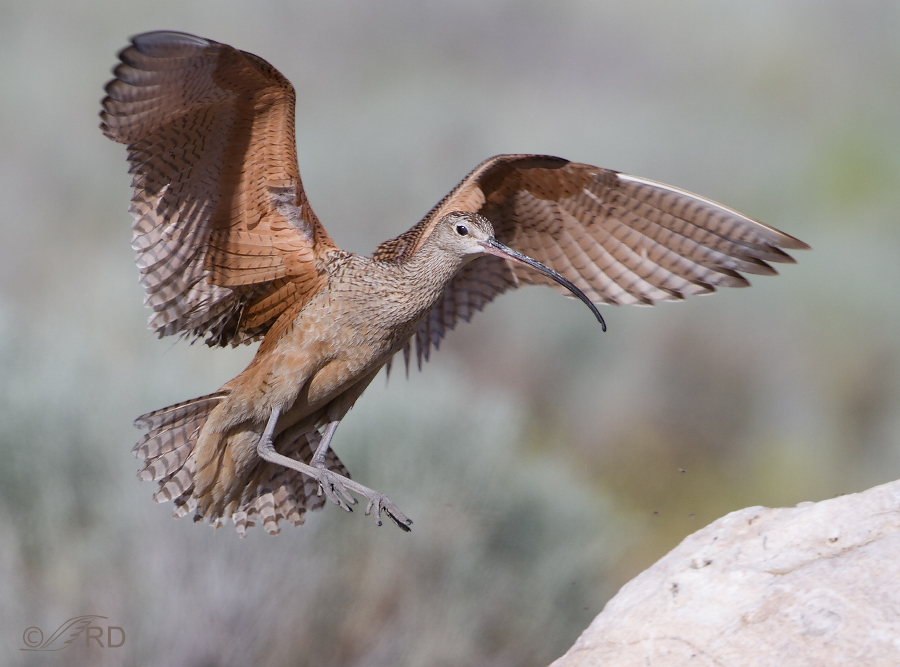
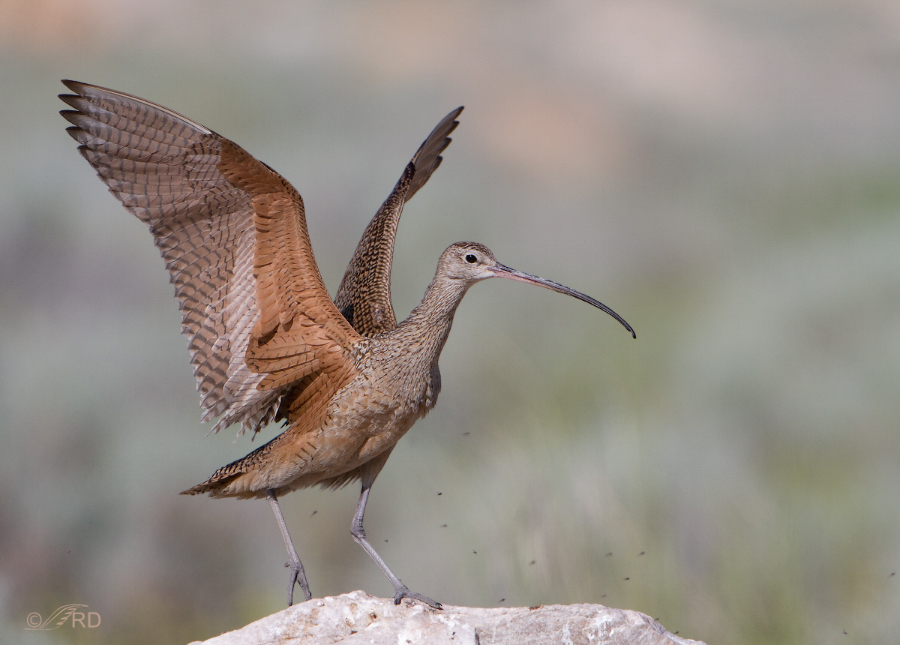
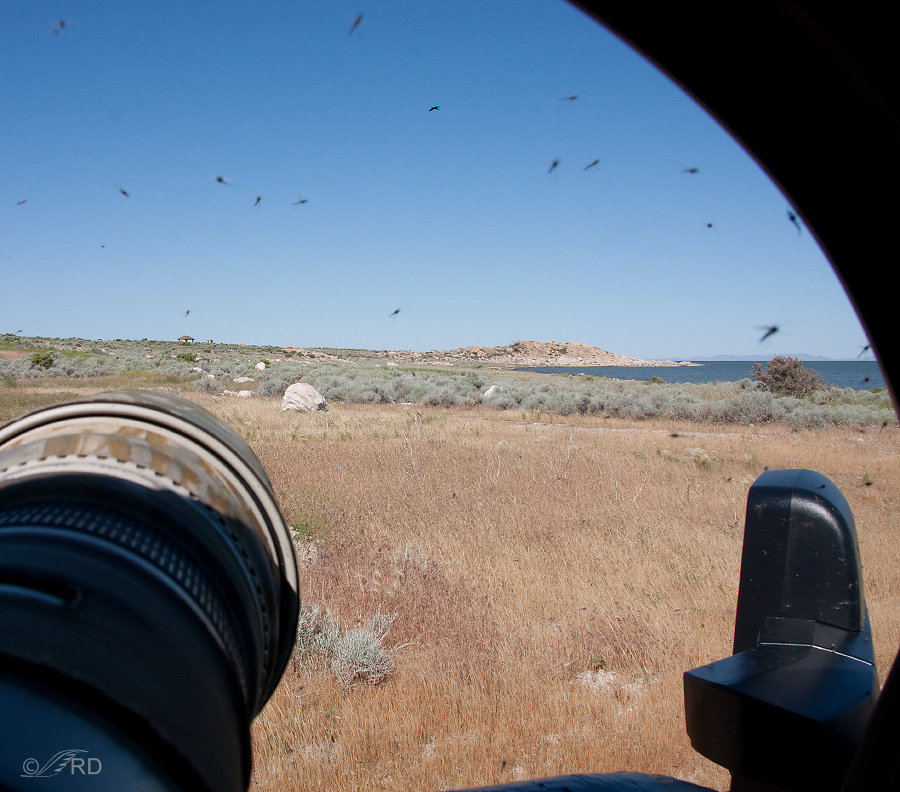

Great series Ron. Thanks for walking through the different steps you took to get these shots.